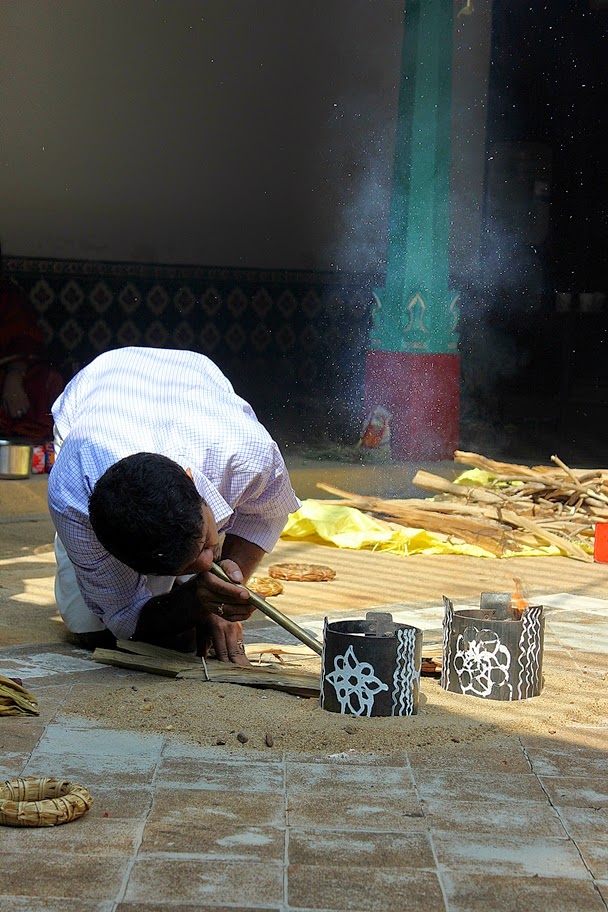It’s a small village near sivagangai.
The village looks much like other villages from outside. Once you enter into
the villages, all are very huge chettinad houses. The architecture is awesome.
Most houses are locked. But maintained properly.
I am posting the pongal
celebrations in this post. Food and other posts to follow.
They made 2 types, one with mud
pot another with brass. The one with mud pot is tedious process, so for the
next generation they are making it with brass. Still the oldies follow the mud
pot one.
First we will see how they
prepare pongal with mud pot.
The previous day they clean all the mud pot and keep it dry.
Then they draw kolams in the mud
pot with arisi mavu. This needs lot of patience and interest. It took so much
time for the achi to complete the kolam. They take a small stick and tie a
piece of cotton cloth around it and use that for painting. Ur city brain may
think, y cant we use the ear buds for doing it. When we use that it wont come
as perfectly as this.
The previous day they clean all the mud pot and keep it dry.
First they put kolam like shown below with olakkai.
Each family has 2 pots for pongal. One with sweet and another with salt. Apart from this there is a big pot separately for boiling milk alone.
Each family has 2 pots for pongal. One with sweet and another with salt. Apart from this there is a big pot separately for boiling milk alone.
Then heat the empty pongal pots.
At the same time they will boil the milk (water and milk 1:1) separately
and remove the cream (Adai / malai) from
that.
They check the pongal pots are
ready by putting little salt in the pots. Immediately the salt should crack,
which means the pot is hot enough.
Then one of the family member
bring the pot with boiling milk and carefully pour the milk into the pongal
pot. The milk rises immediately because of the high heat in the pot. They greet
each other for that and sprinkle little water over it and reduce the heat. Now
they add the rice and dal and cook it. Finally add the jaggery for sweet pongal
and salt for the other pongal.
The brass method is simple. They
pour milk and water into the brass pot. Once the milk boils and rises, they sprinkle
water and add rice and dal. Once cooked, they add jaggery.
Then they serve it for god by keeping it in plantain leaf along with other vegetables prepared.
When you just wonder what is all
these for? We boil milk daily. Most of the days we forget to switch off the
stove and milk spills over the stove. So what is special about this in this occasion alone.
Then they serve it for god by keeping it in plantain leaf along with other vegetables prepared.
This I consider purely for the
family unity. Each one has a work allocated and this pongal works only as a
teamwork. One has to check the pot, one has to boil milk, one has to take
care of children not to walk in between,
like this whole family is occupied and united. Coordination is so
important in this. Suddenly I felt I was having an urge to see my family
members and called inlaws and greeted them.
Festivals are time of the
year, every one in the family must be together and enjoy together.
Happy pongal to all.
PS: I am a s/w developer, I have experience
only in writing technical documents. I have no clue how to write blogs. So
kindly adjust.

























No comments:
Post a Comment